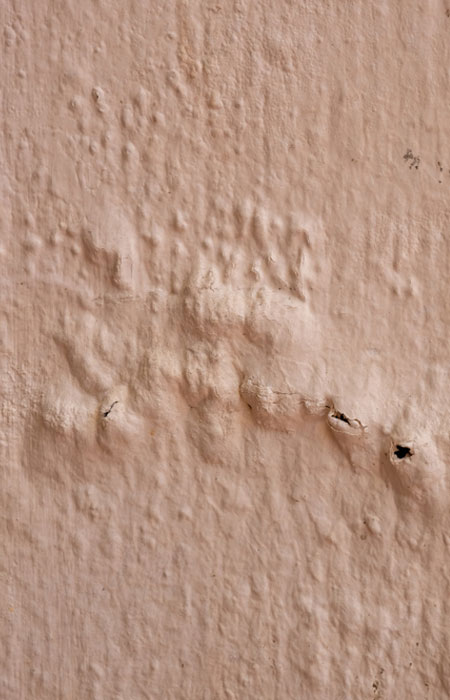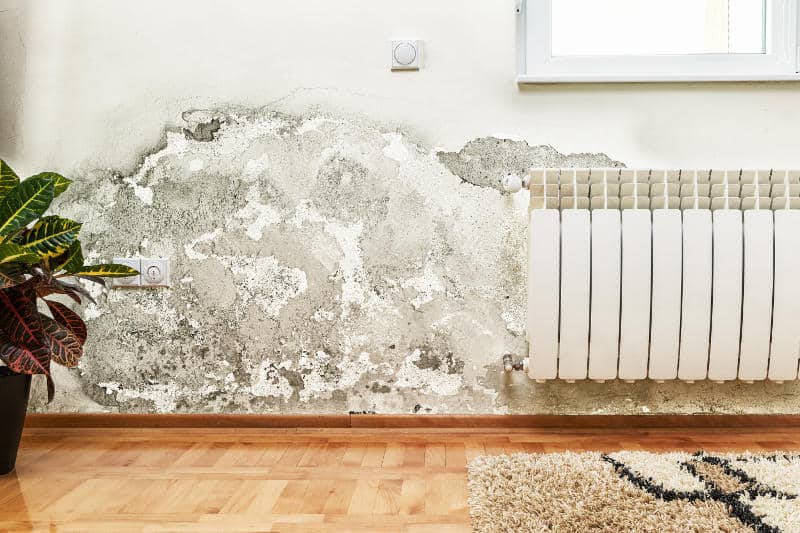Detecting Water Stains on Walls - Guidelines to Check and Fix Them
Detecting Water Stains on Walls - Guidelines to Check and Fix Them
Blog Article
We've stumbled upon this post involving Water Stains on Walls below on the web and figured it made sense to talk about it with you on this site.

Water spots on wall surfaces are not pleasant to the eyes. Occasionally it seems nearly unpreventable to experience water stains on walls in residences.
House owners staying in moist regions continuously take care of the concern of water spots on walls. That doesn't have to be the case for you. With all-around and also exact details on the causes of water stains and also punctual repair work procedures, you will certainly constantly be a step ahead of such events. So, this short article guarantees to be a practical overview for you.
3 Typical Reasons For Water Discolorations on Wall Surfaces
Unlike common belief, water discolorations on wall surfaces do not always originate from poor structure products. There are numerous reasons for water stains on wall surfaces. These include:
Poor Water drainage
When making a structure plan, it is important to guarantee ample drain. This will prevent water from leaking into the walls. Where the drain system is obstructed or missing, underground moisture accumulates. This links to too much dampness that you discover on the wall surfaces of your building.
So, the leading reason for wet walls, in this instance, can be a poor drain system. It can also be because of poor management of sewer pipes that run through the structure.
Wet
When warm wet air meets completely dry cool air, it causes water droplets to form on the wall surfaces of buildings. This takes place in bathrooms and cooking areas when there is heavy steam from cooking or showers. The water droplets can stain the bordering walls in these parts of your house and also spread to various other locations.
Moist or condensation impacts the roofing as well as wall surfaces of structures. When the wall is wet, it produces an appropriate setting for the development of microbes as well as fungi.
Pipeline Leaks
A lot of residences have a network of water pipelines within the walls. It always increases the practicality of such pipelines, as there is little oxygen within the walls.
A downside to this is that water leakage influences the walls of the building and also causes extensive damage. An indication of damaged pipes is the look of a water tarnish on the wall surface.
Water Stains on Wall Surface: Fixing Tips
Property owners would usually want a quick fix when dealing with water stains. Yet, they would quickly recognize this is counterproductive as the water stains repeat. Below are a couple of valuable tips that will certainly guide you in the fixing of water stains on wall surfaces:
Pro Pointer
A houseplant in your house likewise increases its moisture. If the house is currently damp, you may desire to present houseplants with minimal transpiration. An example of ideal houseplants is succulents.
Conclusion
No one desires to have water spots on walls in their house, it can happen to the ideal of us. This short article offers you take advantage of, as you now recognize exactly how to handle this mishap if it does occur.
It is constantly best to hire specialist solutions to assist deal with the damages in your house.
Sometimes it seems virtually unpreventable to experience water stains on wall surfaces in homes.
In contrast to prominent idea, water stains on walls do not constantly stem from poor structure materials. There are a number of reasons of water stains on walls. The water droplets can stain the bordering wall surfaces in these parts of your home and spread to other locations.
Below are a few useful ideas that will certainly guide you in the repair service of water spots on walls:
Published Aug 25, 2022 3:15 PM
We may earn revenue from the products available on this page and participate in affiliate programs.
Pinterest Facebook Twitter Email
signs of water damage in walls
Photo: istock.com
Q: I think I hear water running in my home, and I’m afraid there’s a leak somewhere. How do you know if you have water damage, and what are some signs of water damage in walls? Should I call someone to check it out?
A: If you suspect a leak, the first sign of water damage will likely be a stain on your walls or ceilings. Signs of water damage in your walls can be light-brown or beige spots. You could also find a spot of peeling or flaking paint that’s caused by excess moisture.
These are clear signs of an active leak, and your first move should be to turn off the water to your home. You can do this yourself or contact your city’s utility department. Your next step is to call a plumber, who can determine where the leak is coming from and how to repair it. It’s also a good idea to look around the rest of the home for some of the other signs of water damage to identify which areas have been affected.
Get a pro to do it for you
Receive free, no-commitment estimates from licensed contractors near you.
FIND LOCAL PROS
HomeAdvisor Logo+BobVila.com Logo
Stains on the walls or ceilings are some of the first signs of water damage that homeowners notice.
The most obvious sign of water damage in the wall is discoloration or stains on your walls or ceilings. These stains can start small and grow if the leak isn’t discovered and addressed quickly. If your walls or ceilings are white, you may notice a beige or brown spot, which is a clear indicator of water damage. If you have darker-colored walls or ceilings, you can check for water damage by looking for a patch that may be deformed or sunken. Water damage can occur in several places, so the more thorough your search is, the better.
Moisture can cause paint to flake or peel.
Signs Of Water Damage In Walls
Photo: istock.com
Since drywall isn’t waterproof, moisture that seeps in can affect the way paint looks and feels. Check for flaking and peeling, which are both signs of wall water damage. No matter what color, sheen, or type of paint is used, excess moisture will force the paint to lift off its surface. Although the peeling or flaking may start out small, it will continue to spread if the leak isn’t contained as the extent of the damage increases. Finding the leak may be as simple as inspecting your appliances or fixtures, or you may require the help of a plumber.
Soft or warping drywall can signal water damage.
Your drywall will show signs of water damage in the wall by warping, swelling, or sagging as it succumbs to the weight of the water it absorbs. Your walls or ceilings may puff out and look swollen, or they may sink or cave in. Regardless of whether the spot is small or large, it could eventually lead to structural damage, which could cause harm to you or other residents of the home. In this case, it’s advised to call either a licensed plumber or a water damage restoration company you trust to assess the damage and address the issue before it gets out of control.
ADVERTISEMENT
Sounds of running water or an increase in your water bill can mean there’s a leak somewhere in the house.
You could be dealing with a water leak if you see a significant, sudden jump in your water bill or a gradual increase over several months. In this case, you’ll probably need to contact a plumber who can come out and test your pipes. Because water damage in the wall can go unnoticed before any damage occurs, it’s best to have an expert check your home if your water bill has risen unexpectedly.
If you can actually hear water running when no one is taking a shower or the dishwasher and washing machine aren’t in use, you can try to determine where the sound is coming from and look for water damage on the wall for confirmation.
Think you're seeing signs of water damage?
A pro can evaluate the situation for you. Get free, no-commitment project estimates from services near you.
FIND A PRO
HomeAdvisor Logo+BobVila.com Logo
Water damage can cause musty smells or visible mold.
Musty smells are often hard to miss and indicate a buildup of moisture where it’s not supposed to be. It’s helpful to identify where the odor is coming from so you can look for signs of mold or water damage inside walls. Visible mold looks like light green to black spots. It will also have a distinct odor. If you can see and smell mold on your walls or ceilings, it’s best to call a professional water mitigation company instead of trying to address it yourself. These professionals will be able to figure out where the leak is coming from and use treatments to target the mold so that it doesn’t return days later.
Signs of Water Damage In the Walls
Photo: istock.com
Finding the source of the water and stopping any leaking is imperative to prevent any further damage.
The minute you see signs of water damage to your walls, it’s time to spring into action. There’s no time to waste since water damage can lead to the growth of mold and mildew and compromise a home’s structure. If you don’t have experience dealing with water leaks or if the leak is actively dripping through your walls or ceilings, the best thing to do is shut off your water until a plumber can come to your home and find the source of the leak. Once the leak has been stopped, a professional plumber can provide an estimate to fix the leak and repair the damage, or they can refer you to a water mitigation company that can address the affected drywall and excess moisture. The longer you go without discovering and repairing the leak, the more damage it will do and the more money it will cost to restore your home.
Homeowners will need to replace any damaged drywall and insulation.
Once the leak has been fixed, it’s time to address the damaged drywall and insulation. This is a necessary next step to ensure no mold or mildew grows on the affected area and that your home looks as good as it did before the leak. If you’re a seasoned DIYer and drywall damage is relatively small, this is a job you can probably tackle yourself. It’s best to remove any wet insulation and let the area dry out for 48 hours before putting in new insulation and drywall.
Suppose you have extensive damage to the ceiling or walls. In that case, it may be time to call in water mitigation professionals who have the materials and equipment to treat the area and replace the drywall and insulation. Plus, they can test areas to detect moisture and spray affected areas with products that prevent mold and mildew growth.
https://www.bobvila.com/articles/signs-of-water-damage-in-walls/

I have been very fascinated by How to Find and Repair Water Leaking in the Wall and I am praying you enjoyed reading our blog post. Sharing is caring. Helping others is fun. We enjoy reading our article about Indicators of Water Damage Behind Walls.
For quick fixes, call! Report this page